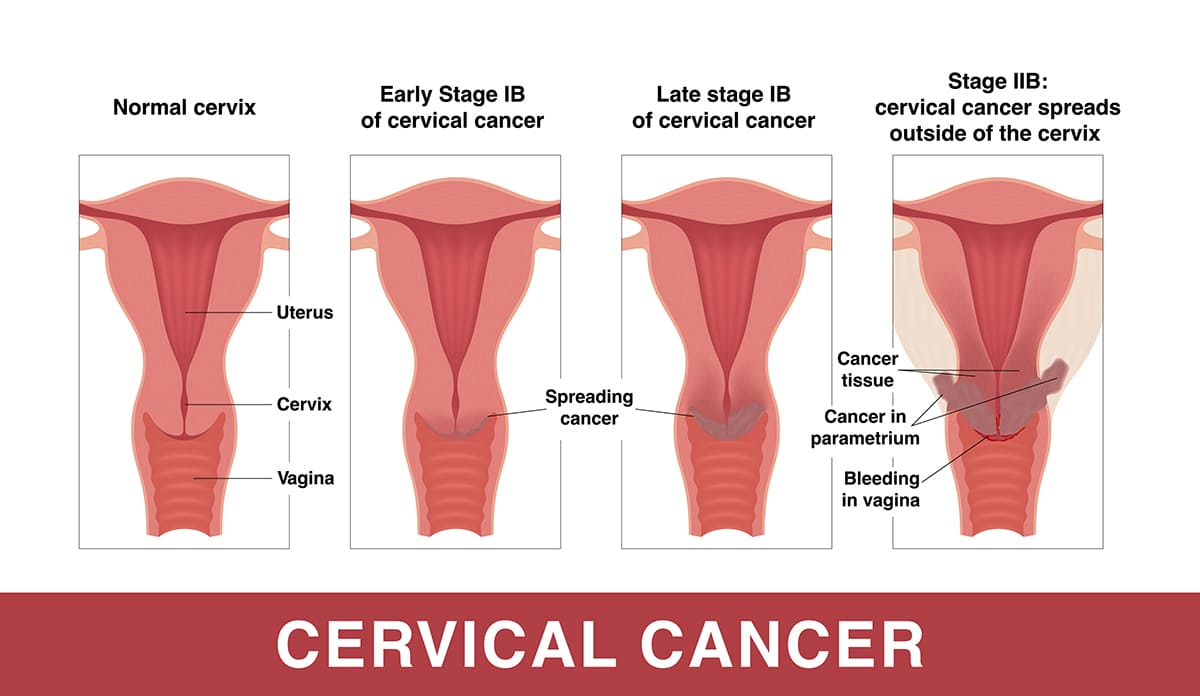
Cervical Cancer: Danger That Women Should Not Overlook
Cancer is one of the top health hazards that claims lives worldwide and has a propensity to increase annually. Be it women or men, children or senior citizens, all have a chance to be affected by cancer, particularly if it is discovered in advanced stages, which will be harder to cure. In some cases, the only course of action is palliative care for a period of time. Therefore, cancer is a cause of concern and careful observation or annual screening. Because early detection can lead to immediate treatment and the chance for treatment early in the course of disease.
Knowing Cervical Cancer
Cervical cancer is one of the top health hazards for women and is considered a major public health problem in Thailand. According the National Cancer Institute, Department of Medical Services, Ministry of Public Health, cervical cancer is the fifth most common type of cancer found in women. Approximately 5,500 new cases are diagnosed annually or 9.3 incidence per 100,000 population and it accounts for 2,200 deaths annually.
Assistant Professor Dr. Duangmani Thanapprapasr, gynecologic oncologist at Bangkok Cancer Hospital Wattanosoth said “cervical cancer is common in Thai women, usually diagnosed when they are 40 – 50 years old. However, currently, it is being diagnosed in younger women from around 30 years old.”
The Cause of Cervical Cancer
The cause of cervical cancer is the human papillomavirus or HPV, which can be transmitted via sexual intercourse. Although there are over 100 strains of HPV, only around 15 types can cause cervical cancer. Therefore, women from age 25 years old or three years after becoming sexually active should receive screening for cervical cancer by a pap smear or ultrasound of the uterus and ovaries. Any abnormality can be discovered and treated early before it becomes cancerous. To lower the risk, women should receive internal exam at least once a year.

Stages of Cervical Cancer
There are 4 stages of cervical cancer:
- Stage 1 or first stage cancer will be contained in the cervix.
- Stage 2 cancer will spread beyond the cervix to nearby tissue around the cervix.
- Stage 3 cancer will spread to the lower uterine and ureter.
- Stage 4 or end stage cancer will spread into the abdomen, liver, or lungs. This is considered to be life-threatening and there is a high chance of mortality.
Treatment for Cervical Cancer
There are several treatment options for cervical cancer, from surgery to chemotherapy and radiation therapy. The most important factor is regular screening for cervical cancer to determine whether it is in the early stages or in the precancerous stages. If discovered early, treatment can begin before it spreads to other organs and reduce the chance of recurrence.
Assistant Professor Dr. Duangmani Thanapprapasr, gynecologic oncologist at Bangkok Cancer Hospital Wattanosoth reiterates that “cancer screening is very important because it will help discover the risk and early stages of cancer quickly so that treatment can begin before it spreads.”